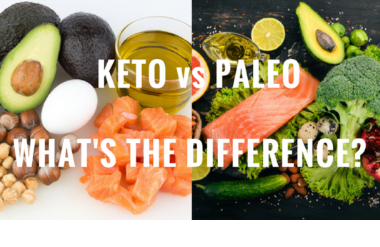It is next to impossible not to hear anything health-related today. You see it online, your friends talk about it, and if you are like me, you are just plain interested in it. No, I was not always interested in health and fitness. In fact, I am still far from being its epitome, but just like many people, I want to live a healthy life without depriving myself of the good stuff (meaning, the yummy food).
Getting to where I am now, albeit not that far yet, has not been easy. In fact, the journey was and still is filled with tears and frustration. When I started my fitness journey, my biggest struggle was dieting. Truth be told, there are days when I still struggle with stopping myself from having that dessert or random slice of pizza. That’s why I am so thankful that nutrition continues to evolve and more ways are discovered that will help keep us healthy and in shape.
Two of the most popular diets today are the Ketogenic diet and Paleo diet. These two are often compared. Many have conducted researches, written their take on these diets, but right now I want to share the 411 of these diets that have taken over the kitchens of many around the world.
The Paleo or Paleolithic diet resembles how human hunters ate before our time. Basically, if they didn’t eat it, neither should you. When I read this, I immediately thought, “How do we know exactly what they ate?” Researchers believe that they ate nothing but whole foods given the lack of technology back then. They ate anything that can be hunted or gathered such as leafy greens, vegetables, nuts, seeds, meat, and fish. Any kind of processed or modern food is not allowed in the Paleo diet.

Okay, before you go and disregard the Paleo diet because it demands you to bid the “good stuff” goodbye, let me tell you something good. One thing that makes the Paleo diet distinct is that there is absolutely no need to count calories. You can eat to your heart’s content. Before we came up with Twinkies, Cheetos, and McDonald’s, the people who came before us subsisted on food that they can gather and hunt. Eventually, humans discovered farming. Grains and sugar became a thing and our bodies have not grown accustomed to them since then.
Don’t get me wrong; I’m not throwing shade at the agricultural industry. There is a reason it is one of the biggest and strongest industries as of today. However, consuming too many agricultural products can be detrimental to our health. See, grains are composed of carbohydrates. When eaten, they turn into sugar. We all know what happens when sugar enters our body. If the sugar is used, it will be converted into energy, otherwise, it will be stored as fat. Paleo experts believe that the reason for obesity is the grains people eat that are just stored as fat.
Another no-no in the Paleo diet is sugar. The only sugar allowed should come from fruits. You know that energized feeling you get after eating that is immediately followed by sleepiness? That’s the sugar causing an energy spike and then crashing your system. This is very dangerous. Why? Because once sugar enters our system, if it’s not immediately turned into energy, it will become fat.
To sum the Paleo diet up, no processed foods, no grains, and no sugar. Great, but where will my energy come from? Our bodies are stronger than you think. It will still continue to function even if we consume fewer carbs. Once the sugar in our bodies is depleted, it will turn to fat and burn it for energy. Our bodies basically become a fat-burning machine. This phenomenon that takes place in our bodies is called ketosis.
What Is Ketogenic Diet?

The Ketogenic or Keto diet is a high fat, low carb diet. Unlike the Paleo diet, it does not strictly prohibit carbs, but rather limits it to 5-10% of a person’s diet; 70-80% should come from fat and 20-25% should come from protein.
However, I understand why the Keto diet is often compared to the Paleo diet - because they have the same end goal: to reach ketosis. Our bodies are fueled by sugar and fat. If a person is on the Keto diet, his primary goal is to get rid of the sugar in his body and to switch to fat as its primary source. For this to happen, he would have to consume more fat and fewer carbs. Once the sugar has run low, the body will make adjustments and rely on fat for fuel. The fats will enter the liver and be converted to energy called ketones. This is what we call ketosis. I have previously discussed the signs and symptoms if a person is on ketosis here.
Now, Which One Is Better?
At the end of the day, only you and your doctor get to decide which diet is better for you. Based on my experience with both diets, Keto has been easier to follow because the food requirements are right up my alley. However, I do recognize that not everyone can do it, especially if you have heart ailments, because of its high-fat factors. My experience with the Paleo diet has been pleasant as well because the food choices are light and easier to prepare, plus it allows me more fruit than Keto does.
Ultimately, in order to decide which diet to follow, you need to define your health goals and what works best for you. If you prefer a diet that would not take too much time to prepare, then Paleo is the way to go, but if you want to lose weight above everything and don’t mind making an effort to prepare your meals, then Keto is the one for you.

